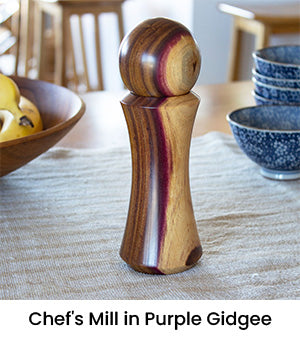Gidgee, Smelly but Beautiful

Gidgee or Acacia cambagei is a native Australian tree well-known for its resilience and versatility. Found across arid and semi-arid regions of Australia, it plays a crucial role in the local ecosystem and has various applications in industry and craft.
Ecological Significance and Habitat
Gidgee thrives in the challenging environments of central and northeastern Australia. It is predominantly found on heavy, fertile clay and loam soils, often forming dense stands or coexisting with other native species like Brigalow. Its presence is essential for maintaining the ecological balance, providing habitat and food for local wildlife.
Physical and Botanical Characteristics
Acacia cambagei grows up to 15 meters tall, with a broad, malodorous crown and flaky, dark grey bark. Its leaves are actually phyllodes, which are leaf-like structures that photosynthesize. These phyllodes emit a distinctive smell, often likened to boiled cabbage, especially when the plant is in bloom or during humid conditions. The tree's flowers are golden and spherical, contributing to its ornamental value despite the odour.
Uses in Traditional and Modern Contexts
Traditionally, Indigenous Australians have valued Gidgee for its utility and resilience, using it in tools, shelters, and medicinal applications. Its robust nature underscores its importance in their daily lives and cultural practices.
In modern times, Gidgee's durability and termite resistance make it a preferred choice for woodworking and furniture making. Its dense, hard timber is ideal for crafting durable, long-lasting items with a natural aesthetic.
Here at Australian Woodwork, we focus on the unique qualities of Gidgee wood. Our Flip-Top Ring Box, made from Purple Gidgee and Queensland Ebony, displays elegance and sophistication with an art deco influence. The Small Oval Trinket Boxes feature Purple Gidgee's vibrant colour, paired with the fragrant Camphor Laurel, creating both visually appealing and functional art pieces. Furthermore, our Chef's Mills, crafted from Purple Gidgee, highlight the wood's durability and distinctive colouring, transforming a kitchen essential into a piece of art.
Agricultural and Environmental Impact
Gidgee's role extends beyond its wood, significantly impacting agriculture and the environment. It is known for its ability to withstand harsh drought conditions, making it a valuable resource in arid landscapes. In agriculture, Gidgee trees are sometimes used as fodder for livestock, especially during droughts, although care must be taken due to the potential toxicity of some Acacia species. Environmentally, the tree helps in soil stabilization and supports biodiversity, hosting a variety of bird and insect species within its dense canopy.
Cultural and Artistic Value
Acacia cambagei holds a special place in Australian culture and art. Its wood is not only valued for practical uses but also appreciated for its aesthetic qualities. The rich, dark tones of Gidgee wood make it a favoured material for artists and craftsmen, who use it to create beautiful, intricate works of art and functional items. This artistic appreciation reflects the tree's integral role in the cultural heritage and artistic expression of the Australian people.
Sustainability and Future Outlook
The sustainability of Gidgee wood is paramount, ensuring that this resource remains available for future generations without harming the environment. Practices like controlled harvesting and responsible management of Gidgee populations are essential to maintain its availability and ecological role. Looking forward, the continued use of Gidgee in industries and crafts must be balanced with conservation efforts to preserve its natural habitats and ecological functions.
In conclusion, Acacia cambagei, or Gidgee, is more than just a tree; it is a vital part of Australia's natural heritage, offering valuable resources for industries, contributing to biodiversity, and enriching cultural and artistic traditions. Its enduring presence symbolizes resilience and adaptability, qualities that are integral to the Australian landscape.










